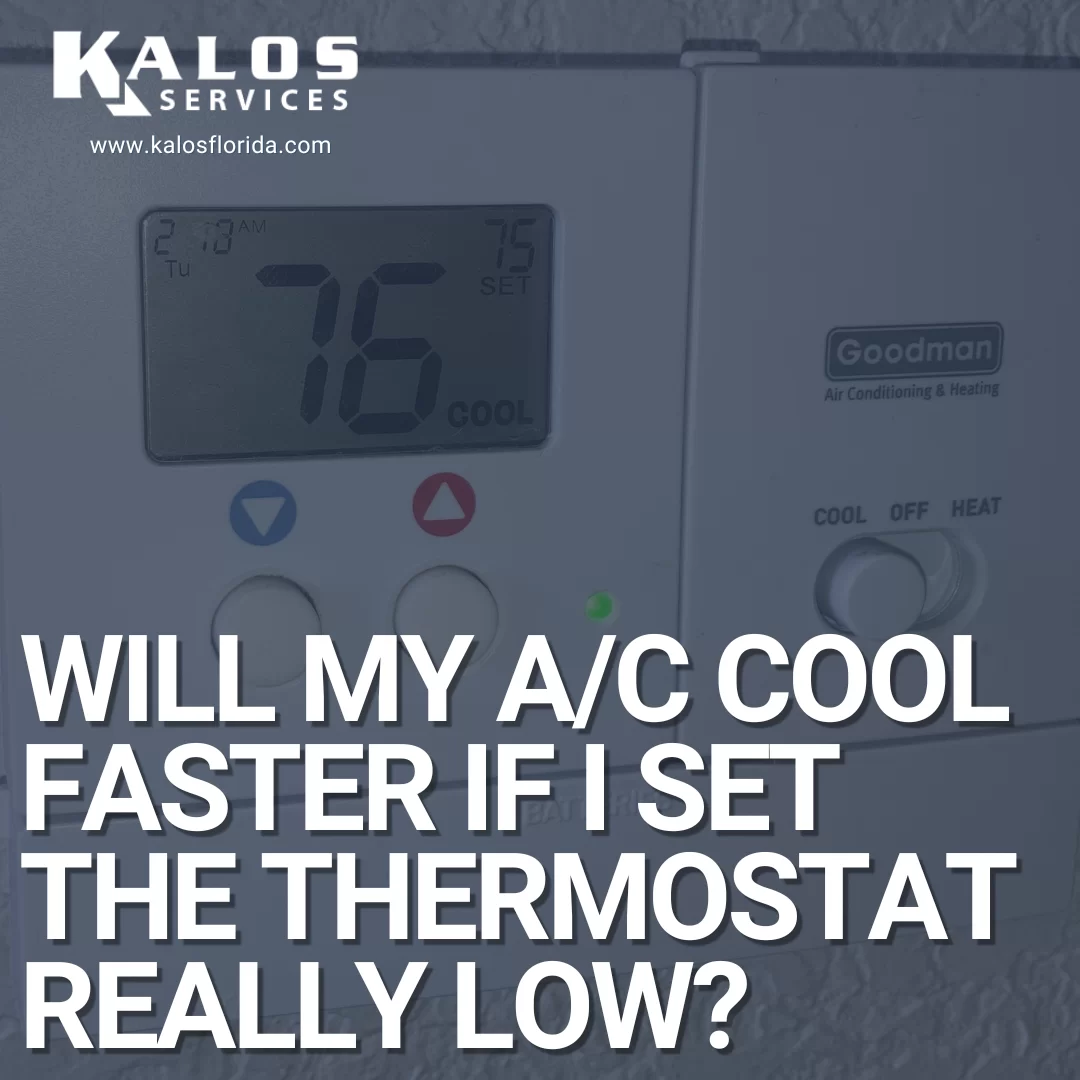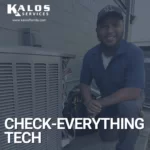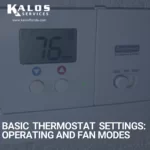We control our A/C temperature with the thermostat. If you have a heat pump (or a furnace and A/C unit), you can choose whether to get heating or cooling. You can also set temperatures for each mode. Many people opt for temperatures between 68 and 75°F. As you know, our outdoor temperatures can far exceed those, often going into the upper 90s. When the A/C has a hard time keeping up, it may be tempting to set the thermostat really low to get the A/C to cool faster.
While the idea makes sense, it’s actually not that effective. We’ll explore how thermostats work and what you can realistically do to get your house to stay at a cool, comfy temperature.
How a Thermostat Works
A thermostat is a controller that sends and receives information on wires that go to the A/C unit. It will show you the current mode (i.e., heating or cooling), the current temperature, and the set point. The set point is the temperature you want your home to maintain.
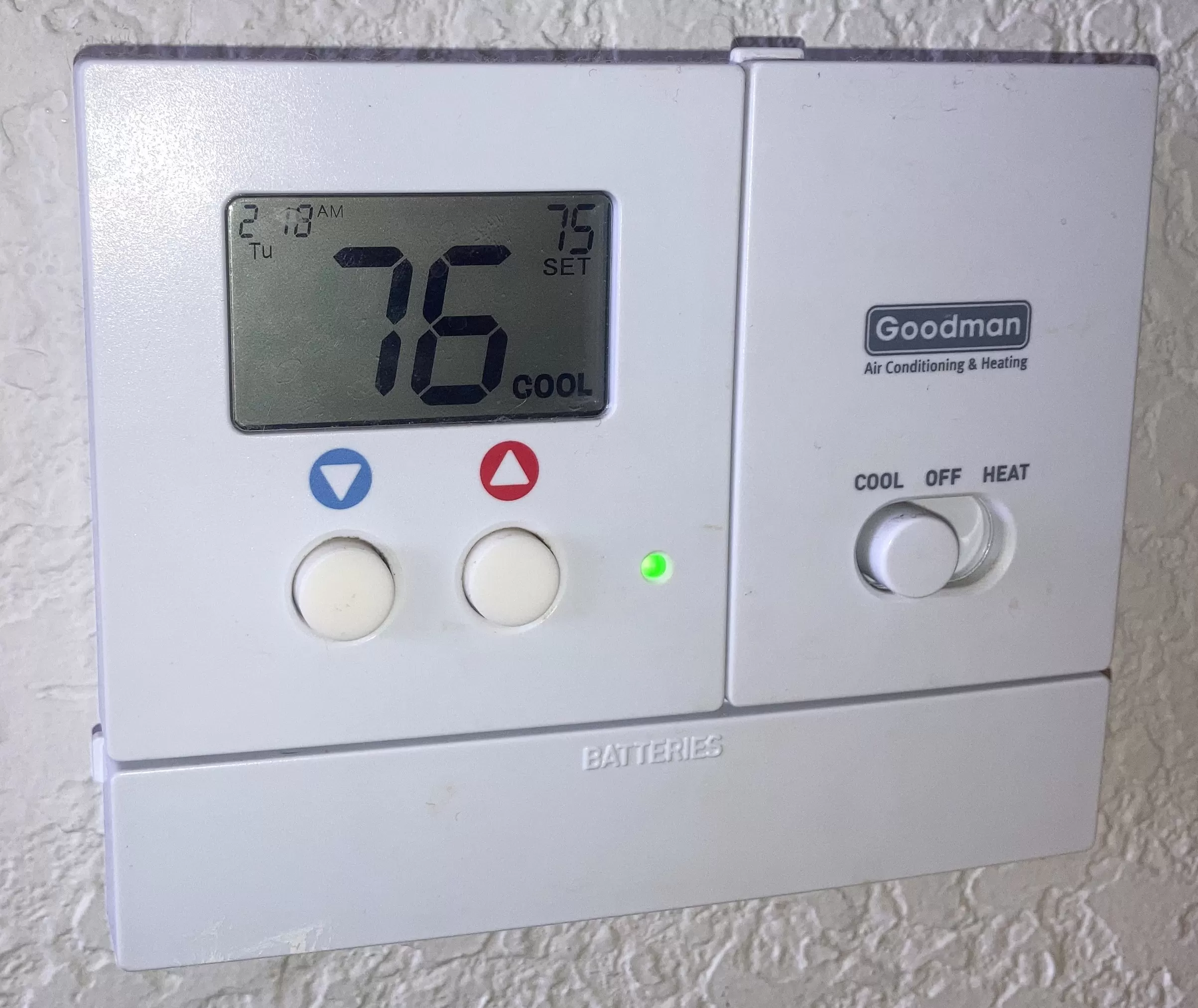
You can press the arrows (or turn a dial or use a remote control or app) to change the set point. The idea is that the A/C will come on when the temperature is above that set point, and it will run until it reaches that set point. If you set your thermostat to 72°F in cooling mode, your A/C won’t run until a sensor in the thermostat detects a temperature of at least 73°F. Then, your A/C will run until the sensor detects 72°F. If you set the thermostat lower, the A/C will run until the sensor detects that the air has reached that lower set point.
What Does a Lower Set Point Do?
Let’s say it’s really hot outside, the set point is 72°F, and the current temperature is around 76°F and not coming down fast enough. Some people might consider dropping the set point to a lower temperature, such as 65°F, to get the A/C unit to cool down faster. That actually won’t make the A/C cool faster at all. It’ll just tell the A/C unit to keep running longer—until the temperature reaches 65°F. (There is, however, an exception for some ductless mini-splits. Some of them can produce more heating or cooling if the sensor’s temperature is further away from the set point. You can set the thermostat low for those, but this is not a typical feature of most A/C systems.)
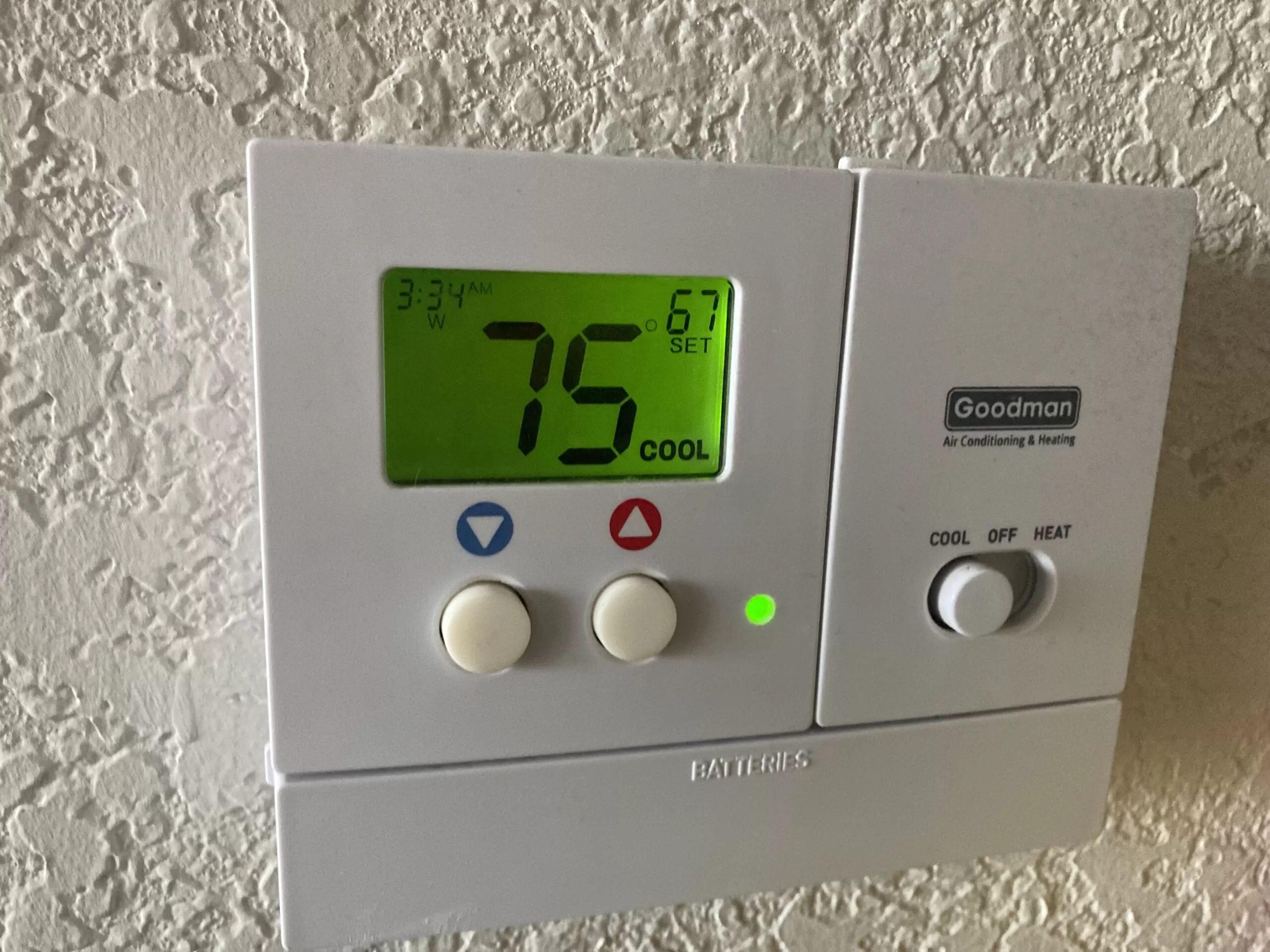
It’s a common misconception that the set point refers to the temperature of the air coming out of the vents. That’s not the case; the air coming out of the vents is usually around 55–60°F, though that’ll depend on things like the room air temperature and the A/C’s overall performance. That’s a lot colder than most set points, but a lot of factors may negate the cooling effect, especially in the summer.
The temperature of a room depends on a lot more than just the A/C. The sun can shine through windows, which will make your house warmer. Humans and animals give off body heat, so they’ll also raise the temperature. Insulation in the walls keeps heat from entering or leaving a building, so that will affect the temperature. We also can’t forget that lights, ovens, hot plates, and other heating objects or appliances also heat your home. The temperature sensor that determines whether the set point has been reached or not is affected by all of those.
If a Lower Set Point Doesn’t Help, How Can We Cool Down Faster?
While the A/C is an important part of indoor comfort and temperature control, it is just one factor. We can control a few other factors in our homes.
Blinds on windows are inexpensive ways to keep a massive heat source at bay: sunlight. Light-colored Venetian blinds are some of the best for this purpose.
You’ll also want to steer clear of incandescent light bulbs if you still have those, as they produce a lot of heat. LEDs are brighter and give off way less heat. They are a lot more energy efficient as well; if you’re currently using incandescent bulbs in your home, you will save money on your energy bills by switching to LEDs.
You can also plan your meals around the forecast. If there’s going to be a really hot day, you can opt for a cold or microwaveable meal instead of using the range or oven. That said, if it gets cold in the winter and your heat pump can’t keep up, you can consider making hot food in the oven or on the stovetop, which will add heat to the home.
Of course, if your A/C can’t seem to keep up in warm but not terribly hot temperatures, there could still be a problem. If you suspect that your A/C unit is having issues, you can give us a call or text any time at (352)-243-7099, and we will have someone available to help. Our customer service reps can talk you through common issues that you can fix yourself, or they can put you on our service schedule so that a technician can come out and figure out what’s going on. You can also learn more about our full slate of residential HVAC services at https://www.kalosflorida.com/air-conditioning/.

